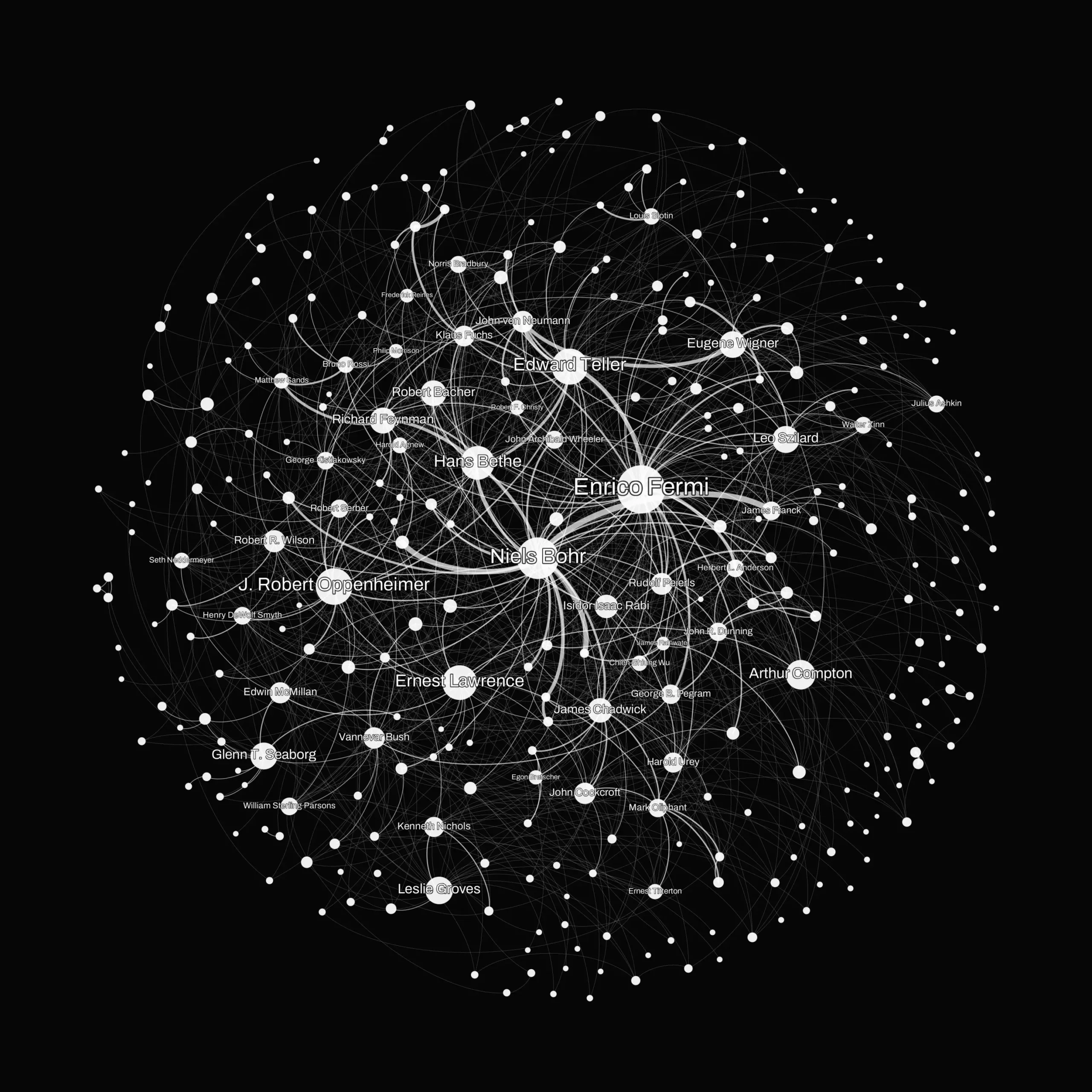The Manhattan Project, a covert research program conducted during World War 2, remains one of the most significant and controversial scientific endeavors in human history. Led by brilliant scientists like J. Robert Oppenheimer, it culminated in the development of the first atomic bombs. Milán Janosov, Founder of Geospatial Data Consulting and Chief Data Scientist at Baoba, has delved into this historic project using network science methods to map the relationships between the scientists involved. By analyzing the connections between individuals within complex systems, Janosov provides a unique perspective on the collaboration and social networks of the Manhattan Project.
Janosov, an expert in network science with a background in physics, has previously explored mapping networks of scientists, including Nobel laureates in a separate project. Inspired by the release of the Oppenheimer movie, he decided to untangle the collaboration and social connections behind the Manhattan Project. Unlike traditional approaches that rely on shared publications, Janosov chose to use Wikipedia as a publicly available information platform. However, due to the classification of some of the Manhattan Project’s science, he had to find alternative sources to build his network.
To construct the network of scientists involved in the Manhattan Project, Janosov utilized language processing techniques. He collected every Nobel laureate’s Wikipedia page and compiled them into a dataset. By analyzing the text within these pages, Janosov quantified the frequency of references between each laureate. This approach allowed him to create a network where scientists were nodes connected based on Wikipedia mentions and references. For example, the Wiki page of Oppenheimer mentions Enrico Fermi multiple times, establishing a strong link between the two physicists.
The resulting map created by Janosov visualizes the relationships between scientists, with each renowned scientist represented as a dot and the connections between them as lines. This intricate web highlights the research circles that closely collaborated during the Manhattan Project. The map’s community structure outlines different departments and cliques such as the Theoretical Division with Feynman or World War II refugees around Bohr. One particularly interesting aspect highlighted by the map is the strong connectedness of Hungarian immigrants, known as the Martians – Teller, Wigner, Szilard, and Neumann – who played a foundational role in the atomic dawn. By utilizing appropriate coloring, their connection becomes clearly visible.
Janosov’s colorful map of the Manhattan Project exemplifies the value of network science in representing human connections and visualizing complex systems. This branch of research holds great potential for shedding new light on various scientific and humanitarian topics. As Janosov continues his work, he focuses primarily on questions related to urban planning, geospatial data science, and sustainability.
The Manhattan Project, a secretive and controversial research endeavor, involved the collaboration of brilliant scientists. Through the lens of network science, Milán Janosov has examined and mapped the intricate web of relationships within this historic project. By choosing an unconventional method, utilizing Wikipedia and language processing techniques, Janosov was able to construct a network that captures the connections between scientists. His colorful map offers a vivid representation of the collaboration and highlights the significant contributions of various individuals and cliques. Network science continues to be a valuable tool for understanding human connections and unraveling complex systems, promising new insights for the future.


Leave a Reply